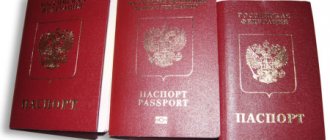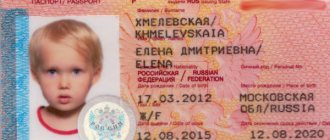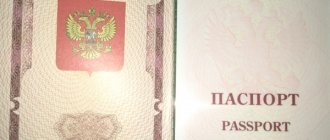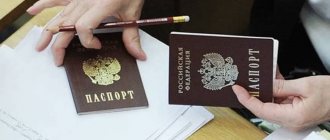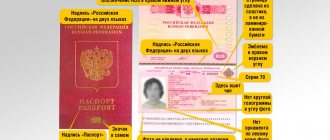How are they different from each other?
The old and new samples of international passports have been happily side by side for more than five years.
During this time, citizens have developed certain stereotypes about each of them. But we are only interested in the specific differences that are characteristic of these two documents.
Cost of a foreign passport (state fee)
The materials that make up international passports differ significantly from each other. If the production of an old-style passport requires only paper, then a special chip is sewn into the biometric foreign passport.
That is why the cost of such documents varies. If you pay a state fee of two thousand rubles for an old-style passport, then three and a half thousand rubles for a new-style passport.
Validity
The validity periods of these passports also vary. An old-style passport has a validity period of 5 years, and a biometric passport has a validity period of twice as long, that is, 10 years. But if you often leave the country and your passport, regardless of how long it was issued for, no longer has blank spaces for stamps, you will have to change the document even more often. A detailed description of the process of replacing a foreign passport is presented here.
Materials
As mentioned above, to produce an old-style international passport, you need a paper medium in the form of a passport book, where a photo is pasted and information is entered.
The new type of passport has a special plastic plate with a chip sewn into it, on which all the necessary information about you is digitally printed, as well as your photograph.
Later, as planned by the government of our country, information about the citizen’s blood type, his physiological and mental characteristics will be entered into the chip.
Receipt times
Of course, due to the fact that the old-style passport is easy to fill out, you can receive it much earlier than a biometric one. This usually takes two to three weeks after submitting the documents.
To receive a biometric passport you will have to wait from two to one and a half months.
But if you want to get a foreign passport not at your place of residence, then get ready for the fact that, regardless of what kind of passport you are applying for, the waiting period will be increased.
This happens because the department of the Federal Migration Service responsible for issuing your international passport will have to make inquiries to the relevant authorities at your place of residence and registration about whether you have outstanding criminal records, alimony debts, and so on. Depending on how quickly responses to your requests are received, your passport will be issued.
What is the difference between a new passport and an old one?
Until recently, residents of Russia did not wonder about choosing an exit paper, since there was only one regular international passport. But since 2010, the legislation has been amended, according to which now every citizen has the right to choose between the old and new model.
What is the difference externally is only in the mark, which indicates the presence of an electronic chip in the passport. This chip stores information about the owner of the document.
How does a biometric passport differ from a regular passport?
- A longer validity period, 10 years to be exact.
- With such paper you will save time at the checkpoint, since all data will already be displayed by the electronic chip.
- The new model has a more reliable level of protection, and it is practically impossible to fake such a passport.
After the innovations, the old model has not disappeared anywhere and continues to be in great demand. Its difference lies in the fact that if a person is short on financial resources and limited in time, then it is better to get an old type of passport.
The processing time is much shorter and the cost of the duty will be approximately 2 times cheaper.
Advantages and disadvantages of old-style international passports
As noted earlier, until 2010, all citizens of the Russian Federation could obtain an old-style international passport.
Innovations have sufficiently reduced the number of applications for this version of the document, but some of its advantages make it possible to still issue exit passports of this type in large quantities, including:
- short terms of receipt;
- lower financial costs for registration;
- more familiar look;
- the opportunity to include your children there, and the accompanying reduction in costs for obtaining a separate passport.
In addition to the above, we can add that this type of document is more suitable for children, since the short validity period allows for timely display of changes in the child’s appearance. This is necessary to avoid problems at the checkpoint.
In addition to the advantages, the old model also has disadvantages:
- short period of validity;
- fewer pages than in the new sample (36 versus 46);
- low level of paper safety;
- the need to provide printed photographs.
Advantages and disadvantages of biometric passports
Innovations in the issuance of exit papers were provoked by some shortcomings of the old model. The advantages of biometric passports:
- Exceeding the duration by 5 years (10 years instead of 5).
- High level of document security, almost completely eliminating the possibility of forgery.
- A simplified scheme for passing inspection at the border checkpoint.
- A large number of pages, which allows you to make frequent trips without changing papers.
- This type of international passport contains all the important information about the citizen (the person’s blood type, his insurance policy number, etc.).
But such advantages require some costs, which mainly relate to time and finances, these are:
- longer period of receipt;
- high cost of state duty and paperwork costs;
- impossibility of entering information about children into the document.
Also, the biometric type is not recommended for children under 14 years of age, because the child’s appearance changes quickly and there may be problems with personal identification at the border.
Which is better
This question is quite controversial, and there is no clear answer to it. It all depends on the specific situation, age and many other factors.
The new type of document is more suitable for people who make frequent trips abroad, are more concerned about their safety and are not limited by time and financial limits.
The old passport is more familiar to many citizens, which is why it is still in great demand. If a person needs to urgently issue a travel document and as cheaply as possible, then it is better to choose this option.
The choice in favor of one type or another remains a personal matter for the citizen, and before submitting an application, it is necessary to consider all of the above factors, and then make an informed decision.
Advantages and disadvantages
Of course, due to the fact that there is a significant difference between these documents, each of them has a number of pros and cons.
So, as for the old-style passport , it wins in terms of production time and the amount of state duty. If you are limited in funds and time, then this option will suit you perfectly. But be prepared for the fact that in less than five years you will again be puzzled by the issue of changing your passport.
A biometric passport is more expensive than an old-style passport in terms of state fees, and you will have to wait a little longer to receive it, but you will save yourself from the problems of changing your passport for the next ten years.
Also, the new type of international passport has its own potential, because very soon it will contain information about your insurance policy number, blood type and other vital information about you.
In addition, European residents have more confidence in people who have new passports.
But everything has a number of disadvantages . Thus, a biometric passport is strongly not recommended for children under the age of sixteen. A child grows quite quickly and if you make a passport for him at an early age, then after a couple of years, it will be impossible to recognize him from a photograph. While the old-style international passport has restrictions by country, which you can learn about from this article.
In the current situation, where there are very serious policies aimed at combating crime against children, you, as a parent, may have some problems at the borders.
But despite all the advice given above, you are not limited in your choice and can prefer any type of international passport from those available based on your own considerations.
Registration of a passport for a child
After all the changes, a rather important question arose: how to issue a passport for a child. In subjective opinion, the advantage is on the side of the old model. Changing a child's appearance too quickly often causes problems at border inspection.
This also applies to the higher cost of the new type of exit paper. Instead of 500 rub. you will have to pay one and a half times more, and in the future there may be problems with identifying the child.
Therefore, you first need to weigh the pros and cons, and only then make a choice in favor of one of the types of passports.
Which international passport is best for a child aged 1 year?
Official permission to leave the country is required for all citizens, regardless of their age. Even newborn children are required to have a foreign passport, and in this case there are no exceptions.
If the child is 1 or 2 years old, then the clear choice should be the old type of travel document, since the appearance and facial features of the child will change beyond recognition in a few years, and this will entail some problems when crossing the border.
A more familiar old type document forces a person to change a photograph every 5 years, and this is especially important for children under 12 years of age. Moreover, the time and financial costs for its registration will be much less.
In cases where people are in no way limited in resources and care about entering all additional data into their international passport, then the choice can be made in favor of a biometric analogue, which is issued to everyone without exception.
If the child is 13 years old, what kind of passport should I apply for?
The question often arises of what type of exit permit to issue if the child is approaching the age of receiving a general passport.
If you need to reduce financial costs, then at the age of 13 it is better to issue an old sample, since upon reaching the age of 14 you will have to change your passport again.
You need to know that you can just as successfully obtain a biometric exit permit, but the costs for it will be higher, and it will also have to be changed after the issuance of a passport of a citizen of the Russian Federation.
After analyzing the above, you can understand that international passports of the old and new models have their pros and cons. In each individual case, the person decides for himself which document is best for him to make.
So what should you ultimately choose?
An old-style international passport is suitable for people who do not often travel abroad , children under the age of sixteen, as well as those who have limited funds. If you need to obtain a foreign passport within thirty days, you also need to obtain an old-style passport.
And if your work involves constant flights, you spend a lot of time traveling, or you just want to be calm about having a foreign passport for the next ten years, then feel free to draw up a new document with an electronic chip.
But remember that for this you must be free from travel for the next month and a half and have three and a half thousand rubles in reserve.
For a child
To obtain an old-style international passport for a child, you must go through all the same procedures - taking photographs, collecting documents, filling out an application, paying a fee. But there are some nuances that you need to know about.
Read more about how to make a passport for a child.
When paying the state fee, you must correctly indicate the purpose of the payment - for an old-style international passport for a minor, and indicate the child as the payer. An old-style international passport for a child under 14 years old will cost 1,000 rubles, but children who have reached their 14th birthday pay the adult rate - 2,000 rubles.
A set of documents for a child includes:
- application in one copy;
- birth certificate, necessarily with a mark on Russian citizenship;
- a copy of the passport of one of the parents;
- two photographs;
- for teenagers over 14 years old - a copy of their own ID.
The application form, specifically intended for minors, is filled out by a legal representative, in general this is the father or mother. Unlike “adult” forms, there is no column about work activity, but there is a place for information about the parent. If the young applicant is already 14 years old, he must independently put his signature in a special frame.
The good news is that children's passports are processed faster than adults', as there is no need to check for security clearances, various debts and outstanding criminal records.
Many parents are still confident that if they only enter information about the child in their international passport, there will be no need to issue their child with their own international passport. This is not the case, and for quite some time: since 2010, every minor citizen is required to have his own travel document to travel abroad. And children are entered into old-style passports so that border guards do not have questions about family ties.
We recommend that you learn more about how to include a child in the parents’ passport.
What is needed for the document?
A foreign passport, like any other document, has certain requirements. Let's get to know them better.
Old style
The requirements for international passports are uniform not only in our country, but also in a number of other states. So, your old-style international passport must be clean. This means that it should not contain any extraneous marks, stains, drawings, or notes.
Also, the passport must be intact . Pages or parts thereof cannot be torn out of it; the passport itself must also be intact and not torn.
The passport must not be subject to any other damage and cannot be wrinkled. The passport photograph must be intact, without glasses or hats, if this requires your religious beliefs.
If the passport contains notes , then next to it should be the seal of the body that entered them and the signature of the head of this body. The passport must have a page for the visa issued, which must be absolutely blank. Otherwise, you will not receive a visa.
New sample
As for the new passport, the same requirements remain. So, the passport must be in neat condition, without any damage, must have blank pages, correctly entered personal information and without any marks.
But special requirements apply to the electronic chip . A page with information about you and a digital photograph is an electronic medium containing digital data. This media must not be damaged, otherwise the passport may be considered invalid.
Pages, as well as digital photographs separately, must not be damaged.
If, however, there was some problem with your passport and it was damaged in any way , you must appear at the Federal Migration Service, where your passport data will be compared with the data in the database and if the damage is not complex, you will be given special notes in your passport, thanks to which you can go on a trip.
But it is worth remembering that immediately upon arrival in your homeland, you must start replacing your passport, since crossing the border, thanks to the mark of the Federal Migration Service, is a one-time event.
